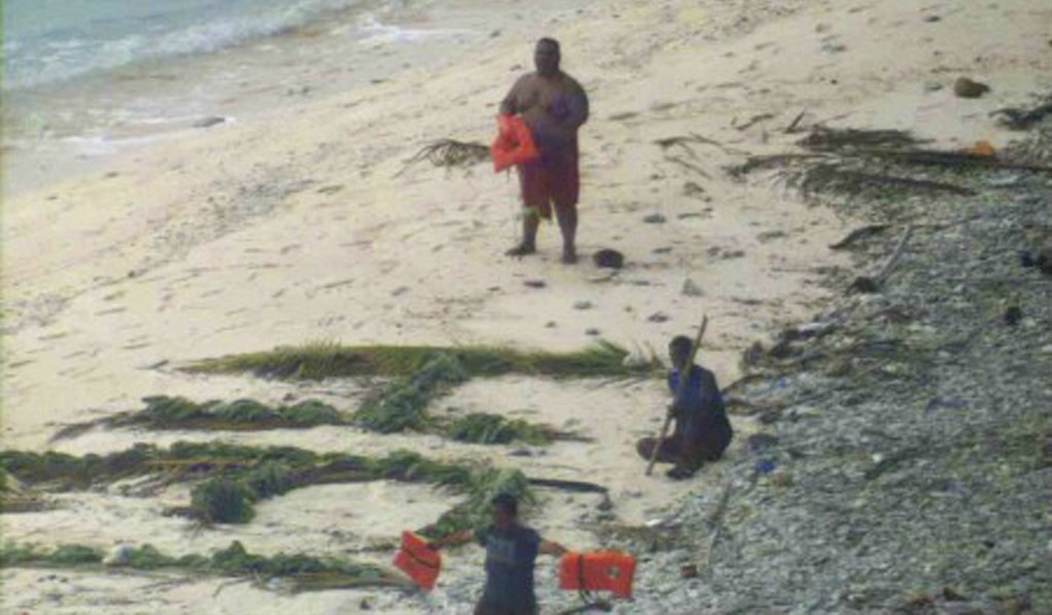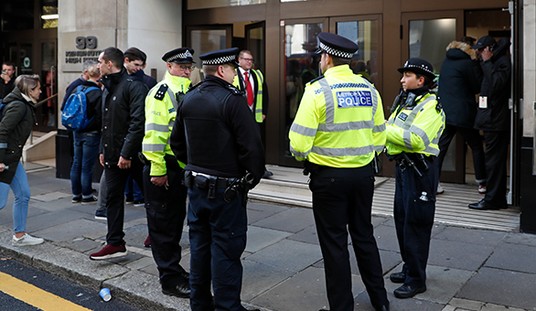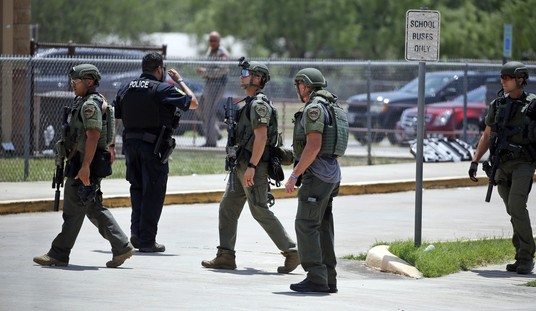This story sounds like a movie script. Three mariners stranded on an atoll in Micronesia were rescued after spelling out HELP with palm leaves.
The 3 mariners set sail on March 31. They were reported missing on April 6 after their relative noted that they still hadn't returned from their voyage. All of the men are in their 40s. They were successfully located on the Pikelot Atoll on April 7 by a U.S. Navy P-8 Poseidon aircraft.
The palm leaves that spelled out their cry for help in the sand saved them.
"In a remarkable testament to their will to be found, the mariners spelled out 'HELP' on the beach using palm leaves, a crucial factor in their discovery,” Lt. Chelsea Garcia, the search and rescue mission coordinator, said in a statement.
“This act of ingenuity was pivotal in guiding rescue efforts directly to their location," she added.
The three men were all experienced in navigating the waters. They sailed from Polowat Atoll on March 31 with their destination Pikelot Atoll. Their boat is described as a “small 20-foot open skiff with an outboard motor." Their destination was about 100 nautical miles northwest of their starting point.
On April 6 a relative of the mariners sent a distress call to the Joint Rescue Sub-Center (JRSC) Guam. She said that her uncles had not returned from their voyage.
JRSC Guam watchstanders coordinated a search and rescue operation that spanned over 78,000 square nautical miles. There were challenges, though, in mobilizing U.S. Coast Guard assets for a search due to availability and weather conditions.
The location of the trio was pinpointed on April 7. A U.S. Coast Guard HC-130J Hercules aircraft from a base in Hawaii relocated the men. Crews dropped a communication device on them to get a read on their condition and status. The men said they were in good health and had access to food and water. The men said they recovered their skiff. It had sustained damage and the outboard motor no longer worked.
Survival packages were deployed by aircrews to help sustain them until help could arrive. On April 9, a ship, the USCGC Oliver Henry, landed on the Pikelot Atoll. It transported the mariners and their equipment back to their original point of departure.
"This successful operation underscores the effective coordination and partnership between the U.S. Coast Guard, the U.S. Navy, and regional partners. We extend our gratitude to everyone involved," Garcia continued in her statement.
The U.S. Coast Guard also reminded mariners to equip their sailing vessels with an Emergency Position Indicating Radio Beacon (EPIRB) — an emergency locator beacon that can alert the Coast Guard to a vessel’s location if sailors have any trouble.
The U.S. Coast Guard published a press release online.
"Our unwavering dedication to the search and rescue mission not only ensures the safety and well-being of mariners and coastal communities but also reinforces the strong bonds of friendship and cooperation between the United States and the FSM and with our DoD partners," said Capt. Nicholas Simmons, commander of U.S. Coast Guard Forces Micronesia/Sector Guam.
"Every life saved, and every mariner returned home is a testament to the enduring partnership and mutual respect that characterizes our relationship, making a profound impact on the lives of individuals and the resilience of communities across the FSM," said Lt. Cmdr. Christine Igisomar, the search and rescue mission coordinator on the day they were rescued.
Those palm leaves that the men used to spell out HELP in the sand saved their lives. Someone should write a screenplay.








Join the conversation as a VIP Member